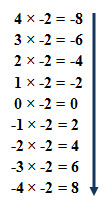Recognizing number patterns is an important problem-solving skill. If you recognize a pattern when looking systematically at specific examples, that pattern can then be used to make things easier when needing a solution to a problem.
Mathematics is especially useful when it helps you to predict or make educated guesses, thus we are able to make many common assumptions based on reoccurring patterns. Let’s look at our first pattern below to see what we can discover.
Now look at the product or answer. That’s an easy pattern to see! Use a calculator to find out what would happen if you multiplied 12,345,679 by 90, by 99 or by 108? Does another pattern develop or does the pattern end?
Here is a similar pattern that uses the multiples of 9. How is the multiplier in this pattern different from the ones in the problems above? Look at the first digit of each answer (it is highlighted). Notice how it increases by 1 each time. Now, observe the last digit of each answer. What pattern do you see there? Using a calculator, determine if the pattern continues or ends.
is data analysis which, in turn, is related to the understanding of patterns. Without being able to recognize the development of patterns, the ability to be proficient in Algebra will be limited.
So everywhere you go today, look for patterns. Then think about how that pattern is related to mathematics. Better yet, share the pattern you see by making a comment on this blog posting.
 |
| $3.25 |
Check out the resource Pattern Sticks. It might be something you will want to use in your classroom.






